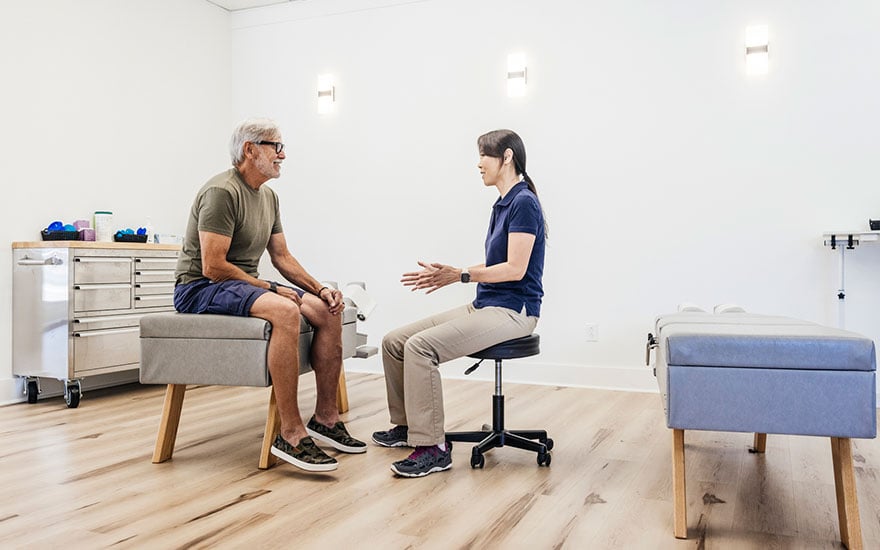
We rely on our feet for most of our daily activities. While walking, our foot and ankle joints work together to allow shock absorption, reaction to the ground, and stability to control movement.
How we naturally walk is well-defined by science and understood to promote energy-saving movement. When we are healthy, our barefoot walking stride is instinctive. The structure of some shoes can alter this natural movement. Selecting good footwear helps to not only prevent injuries to the foot, but also to the lower back, hip, knee, and ankle.
As the name indicates, the toe box of your shoe is the front part of your shoe where your toes are. This part of your foot is known as the forefoot. A wide toe box shoe allows your toes to move freely. This freedom of movement is especially important at the end of your walking stride.
Many shoes have a narrow toe box that can reduce the available movement of your forefoot. This can change the natural movement at the end of your walking stride. Over time, this can lead to injury. When choosing your shoes, look for shoes that feel immediately comfortable and do not change your barefoot foot shape.
Research has shown that the shape of the toe box significantly affects pressure on the forefoot. A narrow toe box shoe constantly squeezes together your toes and can contribute to the development of forefoot deformities (such as bunions and hammer toes), foot weakness, and walking compensations. Wide toe box shoes that allow for full range of motion and the natural function of your forefoot decrease your risk of developing these problems. This change in your footwear can help you move better and reduce your risk of injury.
Across all stages of life, spending time in wide toe box shoes reduces stress on your forefoot and promotes a natural walking stride. This change in footwear can have a positive impact on the child just beginning to walk, athletes of every type, and the elderly concerned with reducing their risk of falling.
Physical therapists can assess your walking pattern, foot function, and strength to assist you in finding the right shoe to improve your mobility and reduce your risk of a variety of injuries. If you are developing a bunion (a bump on the inside of your foot near the base of your big toe or the outside of your foot below the base of your small toe) or have foot pain of any kind, a physical therapist can work with you to identify the cause.
Physical therapists are movement experts. They improve quality of life through hands-on care, patient education, and prescribed movement. You can see a physical therapist directly for evaluation and treatment without a physician’s referral.* To find a physical therapist in your area, visit Find a PT.
*A referral may still be required by your insurance or corporate policies. Some states may limit the type of treatment or number of visits without a referral.


